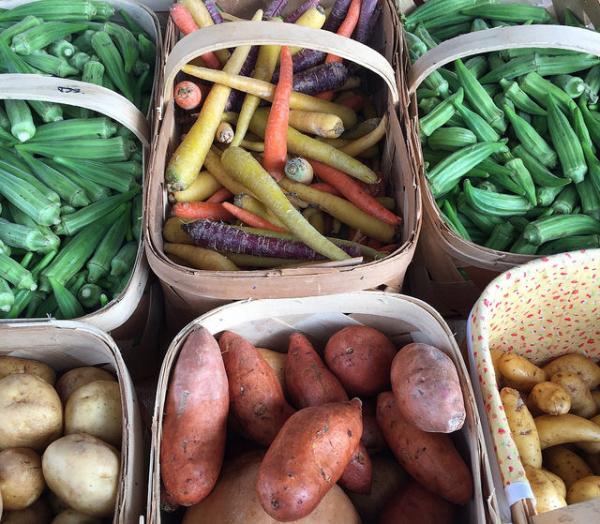Food waste occurs everywhere along the food chain from farm to table, and some estimates suggest that a quarter of the planet could be fed a substantial diet just from food waste. A recent paper sought to characterize food waste at the consumer level concerning both diet and its environmental costs. They created their estimates using a variety of datasets covering what we eat, its composition and nutritional value and what we waste at the consumer level. [1] Waste was defined as both the inedible portions of food, like a carrot peel and the amount left on the plate.
Environmental costs were based on the US Foodprint Model that uses food requirements and subsequently models the land and resources necessary to grow them. For this study, the estimates of waste were used to model resources.
- US consumers waste about 1 pound of food daily. This is equivalent to 800 calories or about a third of our daily intake.
- Fruit and vegetables account for 39% of these losses, followed by dairy (17%), meat dishes (14%) and grain dishes (12%).
These inputs were then fed to the Foodprint Model to determine the environmental cost of those foods.
- 7% of our acerage, 30.8 million acres are necessary to grow our waste food - hay, other feed grains and oilseeds accounted for a little over half.
- 4.2 trillion gallons of irrigation water was applied to those fields. (About a third of Lake Mead).
- 780 million pounds of pesticide, 5.6 billion pounds of various fertilizers.
But as it turns out, not all crops need the same level of resources. When all the waste food and resources were factored into our diets, it turns out that the higher the nutritional value of our diet, the higher the waste. From the lowest to the top quartile of food value, waste almost doubled. How can that be?
Higher quality diets include more fruits and vegetables as well as legumes and nuts – all as it turns out more wasted on the plate and therefore more deleterious to the environment. Let the authors deliver the bad news
“higher quality diets were associated with greater food waste but less waste of cropland; as well as greater waste of irrigation water and pesticides, but not fertilizer.”
So much for the simple belief that because higher quality diets involve smaller amounts of “animal-sourced” foods, their environmental impact is less. We may put more fruits and vegetables in our diets, but we throw a lot of those same fruits and vegetables away – evidently, we hold onto steak. And fruit and vegetables are mostly purchased raw, with no processing, so the majority of their waste is attributable to us, the consumers, not Big Food. The authors hasten to say that a nutritious diet and environmental sustainability are not contradictory goals, you should eat well and throw away less.
Eating well and throwing away less is often a difficult proposition. It requires more shopping and food planning as well as enough experience to choose the ripe from the unripe and the nearly spoiled. All activities and abilities that are disappearing as we cook less and eat out more. It is also true that Big Food could help and eliminate the clutter of use, sell or best by dates to provide singular guidance. And perhaps it requires a bit more Tupperware or Ziploc bags.
[1] What we eat comes from “What we eat in American” part of the National Health and Nutrition Examination Survey-NHANES. The composition of those foods is based on the Food and Nutrient Database for Dietary Studies, and diet quality is based on the Dietary Guidelines for Americans. Food waste is derived from data in the USDA Loss-Adjusted Food Availability data series.
Source: Relationship between food waste, diet quality and environmental sustainability PLOS One DOI: 10.1371/journal.pone.0195495




